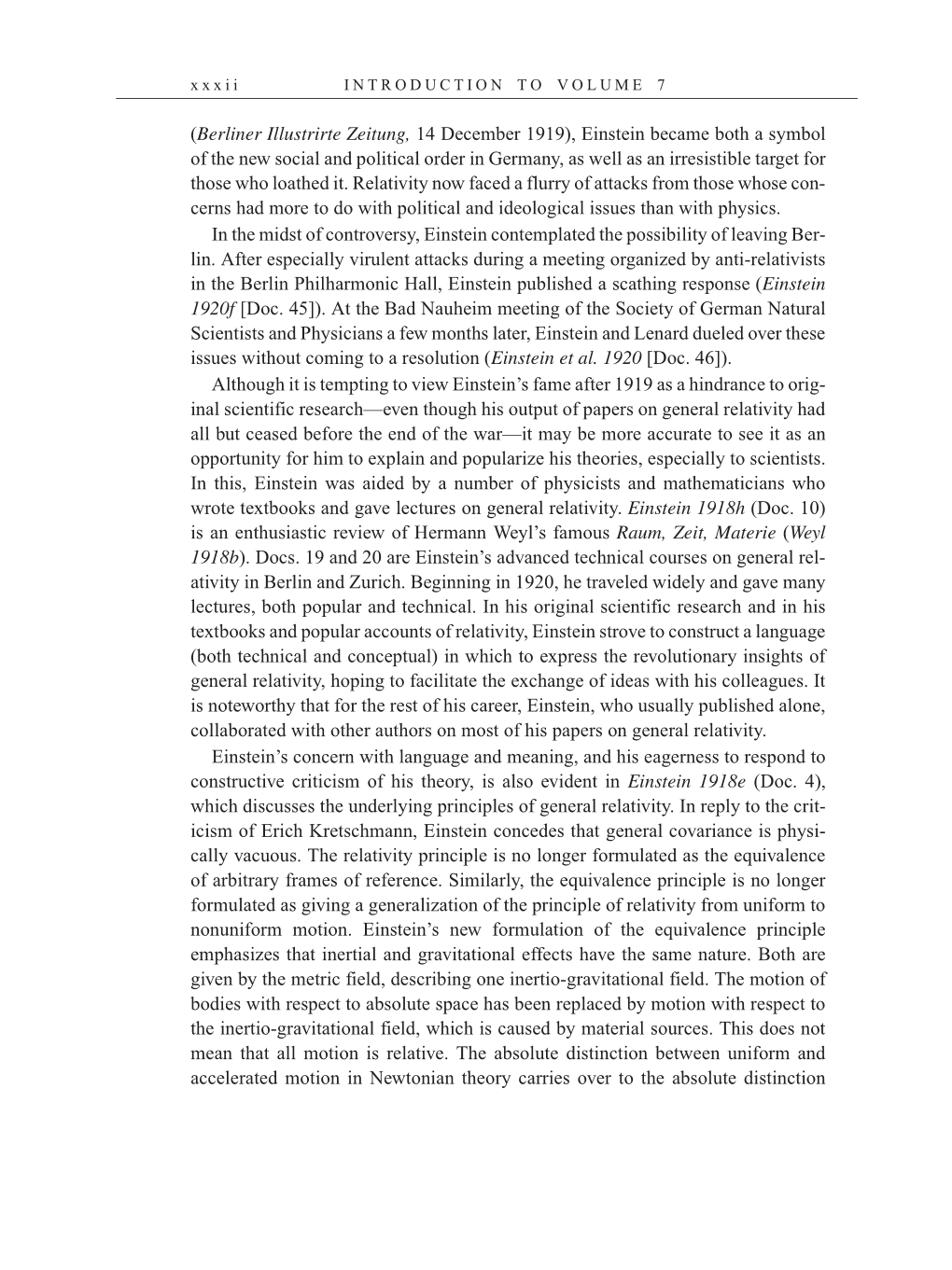x x x i i I N T R O D U C T I O N T O V O L U M E 7
(Berliner Illustrirte Zeitung, 14 December 1919), Einstein became both a symbol
of the new social and political order in Germany, as well as an irresistible target for
those who loathed it. Relativity now faced a flurry of attacks from those whose con-
cerns had more to do with political and ideological issues than with physics.
In the midst of controversy, Einstein contemplated the possibility of leaving Ber-
lin. After especially virulent attacks during a meeting organized by anti-relativists
in the Berlin Philharmonic Hall, Einstein published a scathing response (Einstein
1920f [Doc. 45]). At the Bad Nauheim meeting of the Society of German Natural
Scientists and Physicians a few months later, Einstein and Lenard dueled over these
issues without coming to a resolution (Einstein et al. 1920 [Doc. 46]).
Although it is tempting to view Einstein’s fame after 1919 as a hindrance to orig-
inal scientific research—even though his output of papers on general relativity had
all but ceased before the end of the war—it may be more accurate to see it as an
opportunity for him to explain and popularize his theories, especially to scientists.
In this, Einstein was aided by a number of physicists and mathematicians who
wrote textbooks and gave lectures on general relativity. Einstein 1918h (Doc. 10)
is an enthusiastic review of Hermann Weyl’s famous Raum, Zeit, Materie (Weyl
1918b). Docs. 19 and 20 are Einstein’s advanced technical courses on general rel-
ativity in Berlin and Zurich. Beginning in 1920, he traveled widely and gave many
lectures, both popular and technical. In his original scientific research and in his
textbooks and popular accounts of relativity, Einstein strove to construct a language
(both technical and conceptual) in which to express the revolutionary insights of
general relativity, hoping to facilitate the exchange of ideas with his colleagues. It
is noteworthy that for the rest of his career, Einstein, who usually published alone,
collaborated with other authors on most of his papers on general relativity.
Einstein’s concern with language and meaning, and his eagerness to respond to
constructive criticism of his theory, is also evident in Einstein 1918e (Doc. 4),
which discusses the underlying principles of general relativity. In reply to the crit-
icism of Erich Kretschmann, Einstein concedes that general covariance is physi-
cally vacuous. The relativity principle is no longer formulated as the equivalence
of arbitrary frames of reference. Similarly, the equivalence principle is no longer
formulated as giving a generalization of the principle of relativity from uniform to
nonuniform motion. Einstein’s new formulation of the equivalence principle
emphasizes that inertial and gravitational effects have the same nature. Both are
given by the metric field, describing one inertio-gravitational field. The motion of
bodies with respect to absolute space has been replaced by motion with respect to
the inertio-gravitational field, which is caused by material sources. This does not
mean that all motion is relative. The absolute distinction between uniform and
accelerated motion in Newtonian theory carries over to the absolute distinction
